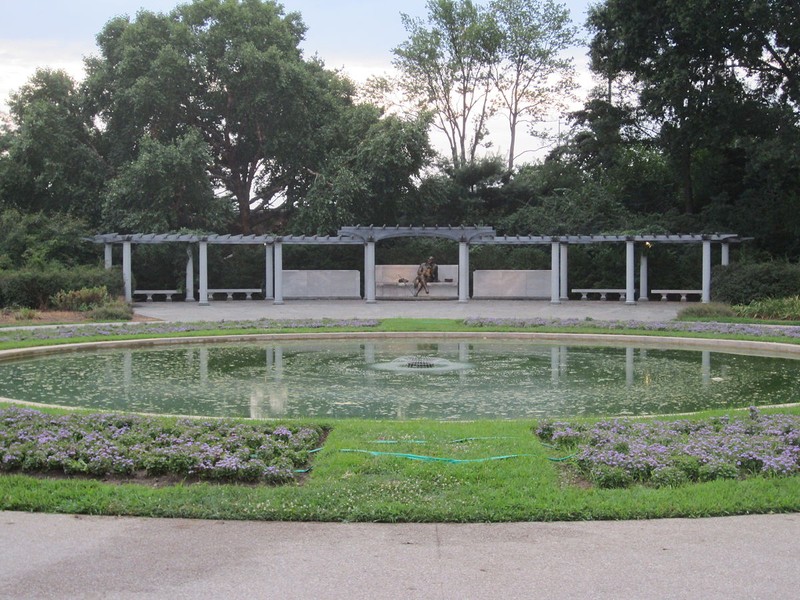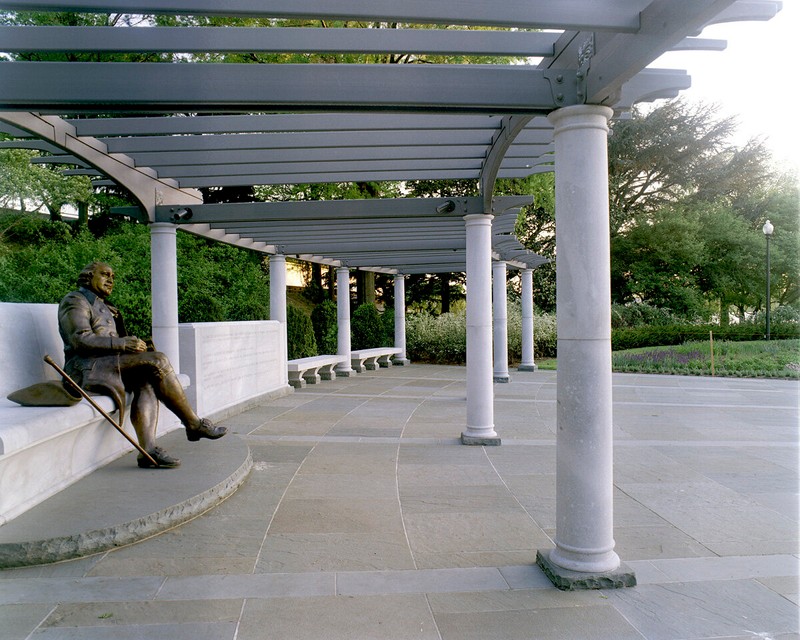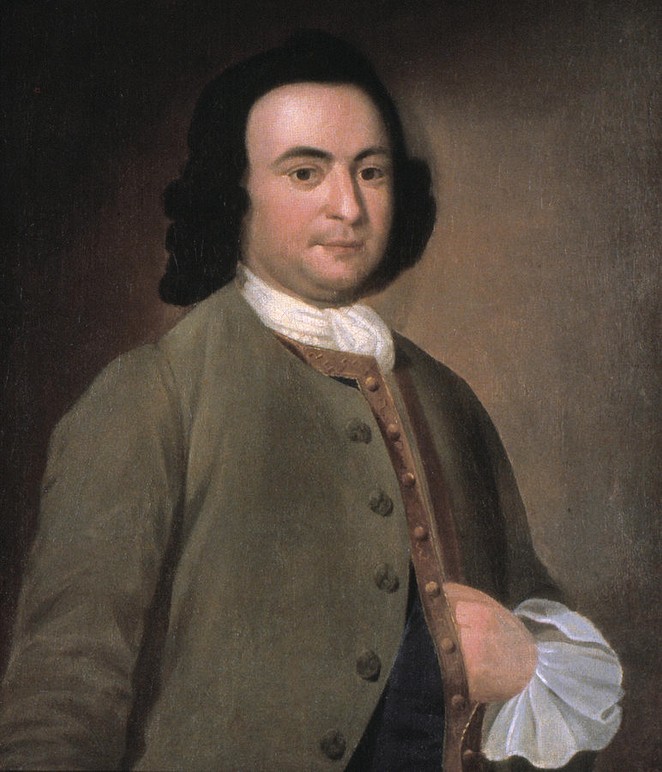George Mason Memorial
Introduction
Text-to-speech Audio
This memorial in East Potomac Park commemorates an often-overlooked Founding Father, George Mason (1725-1792). In 1776, he drafted the Virginia Declaration of Rights, a document that not only served as a model for the U.S. Bill of Rights, but also influenced Thomas Jefferson’s writing of the Declaration of Independence. Later, Mason was one of the few men who attended the Constitution Convention of 1787 to not sign the U.S. Constitution. He died at Gunston Hall, his stately mansion in Virginia near the Potomac River, on October 7, 1792. Roughly two hundred years after Mason’s death, the Board of Regents of Gunston Hall provided funds to erect a memorial in honor of the Virginia Founding Father in Washington, D.C. Designed by architect Faye B. Harwell and dedicated by U.S. Supreme Court Chief Justice William Rehnquist on April 9, 2002 in East Potomac Park, the memorial features a seventy-two-foot-long, nine-foot-tall curved pergola. Beneath it, on a granite bench, sits a life-sized bronze sculpture of Mason. Designed by sculptor Wendy M. Ross, the statue depicts him sitting casually with his legs crossed. He holds a book in his right hand while gazing into the distance, as if deep in thought. Two thick bronze books are stacked on the bench to his left, while his tri-corner hat and walking stick are on his right. Flanking the sculpture and bench are two, four-foot-tall granite walls inscribed with some of Mason’s most profound quotations.
Images
George Mason Memorial in East Potomac Park

A closer look at the bronze sculpture
.jpg)
A glimpse down the pergola

George Mason (1725-1792)

Backstory and Context
Text-to-speech Audio
George Mason was born into a prosperous planter family on December 11, 1725 in what is now Fairfax County, Virginia. Growing up, he received little formal education, but did enjoy the luxury of taking instruction from private tutors. Additionally, Mason read voraciously from the vast library of his uncle, prominent Virginia lawyer John Mercer. In March 1835, when he was just nine years old, his father tragically died while attempting to cross the Potomac. As eldest son, Mason inherited most of his father’s substantial fortune when he came of age, which included thousands of acres of land and hundreds of slaves. In 1747, he became a member of the Fairfax County Court, ultimately serving for thirty years. Two years later, Mason invested in the Ohio Company and soon after become its treasurer. In 1750, Mason married Ann Eilbeck, the daughter of an eminent Maryland merchant and planter. The marriage was a happy one and produced nine children who survived to adulthood. Between 1755 and 1759, Mason oversaw the construction of Gunston Hall, his stately mansion near the Potomac River. In time, he became close friends with neighboring landowner, George Washington.
As tensions rose between the American colonists and the British Crown in the late 1760s and early 1770s, Mason gradually grew to become a leader of the independence movement in Virginia. In 1769, he participated in and helped to organize a Virginia boycott of British goods to protest the Townsend Acts. Five years later, with the help of Washington, Mason penned the Fairfax Resolves, a bold series of resolutions that not only challenged Britain’s authority over the American colonies, but also called for inter-colonial cooperation to safeguard colonists’ rights as freeborn Englishmen. In 1775, the same year the American Revolution began, the voters of Fairfax County elected him to serve on the county’s committees of public safety and correspondence. The following year, while attending the Fifth Virginia Convention, Mason drafted the Virginia Declaration of Rights and most of the first Constitution of Virginia. The former document not only served as a model for the U.S. Bill of Rights, but also influenced Thomas Jefferson’s writing of the Declaration of Independence.
More than a decade later, Mason played a significant role in the debate surrounding the creation and ratification of the U.S. Constitution. In 1787, he traveled to Philadelphia to attend the Constitutional Convention. During the proceedings, Mason actively participated, being among the most frequent delegates to speak. In the end, after the Constitution was drafted, he refused to sign it. Mason objected to the Constitution’s lack of a bill of rights. Additionally, he was appalled that it permitted the continuation of the slave trade until 1808. Ironically, despite being a slaveowner himself, Mason abhorred the institution. The following year, as his home state debated ratification, he once against voiced his concerns. Despite this, Virginia voted to ratify the Constitution. Many others, however, shared Mason’s concerns about the Constitution. In order to win their support for the Constitution, pro-ratification forces agreed to allow for a U.S. Bill of Rights to be added to it. After his home state voted in favor of ratification, Mason retired to Gunston Hall, where he died on October 7, 1792.
Roughly two hundred years after Mason’s death, the Board of Regents of Gunston Hall provided funds to erect a memorial in honor of the Virginia Founding Father in Washington, D.C. Designed by architect Faye B. Harwell and dedicated by U.S. Supreme Court Chief Justice William Rehnquist on April 9, 2002 in East Potomac Park, the memorial features a seventy-two-foot-long, nine-foot-tall curved pergola. Beneath it, on a granite bench, sits a life-sized bronze sculpture of Mason. Designed by sculptor Wendy M. Ross, the statue depicts him sitting casually with his legs crossed. He holds a book in his right hand while gazing into the distance, as if deep in thought. Two thick bronze books are stacked on the bench to his left, while his tri-corner hat and walking stick are on his right. Flanking the sculpture and bench are two, four-foot-tall granite walls inscribed with some of Mason’s most profound quotations.
Cite This Entry
Curran, Francis and Jonathan Still on behalf of Clio Volunteer Editors. "George Mason Memorial." Clio: Your Guide to History. July 16, 2021. Accessed April 10, 2025. https://theclio.com/tour/48/42
Sources
Broadwater, Jeff. "Mason, George (1725-1792)." Encyclopedia Virginia. Virginia Humanities. Web. 13 April 2021 <https://encyclopediavirginia.org/entries/mason-george-1725-1792/>.
"George Mason." Encyclopædia Britannica. Web. 13 April 2021 <https://www.britannica.com/biography/George-Mason>.
"George Mason Memorial." NPS.gov. U.S. Department of the Interior. 10 April 2015. Web. 13 April 2021 <https://www.nps.gov/nama/planyourvisit/george-mason-memorial.htm>.
"George Mason Memorial: Rehabilitation of a Memorial to a Founding Father." nationalmall.org. Trust for the National Mall. Web. 13 April 2021 <https://nationalmall.org/content/george-mason-memorial>.
Tucker, Spencer C., ed. American Revolution: The Definitive Encyclopedia and Document Collection. Vol. 3. Santa Barbara, CA: ABC-CLIO, 2018.
https://commons.wikimedia.org/wiki/File:George_Mason_Memorial,_Washington,_D.C._2012.JPG
https://en.wikipedia.org/wiki/George_Mason_Memorial
https://nationalmall.org/content/george-mason-memorial
https://en.wikipedia.org/wiki/George_Mason

